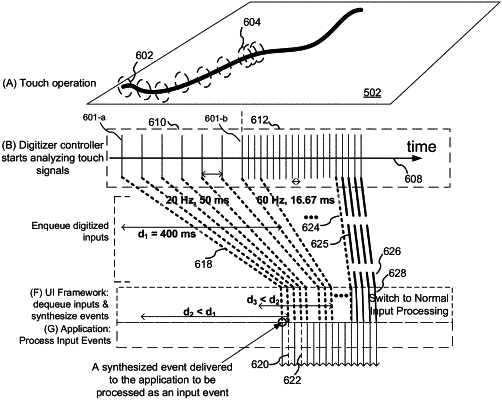| CPC G06F 3/04166 (2019.05) [G06F 3/04845 (2013.01); G06F 3/04883 (2013.01); G06F 3/04184 (2019.05)] | 57 Claims |

|
1. A method, comprising:
at an electronic device having a touch-sensitive surface and one or more processors:
detecting a touch input;
after a latency period, delivering to an application a sequence of input events that represent the touch input, including, in sequence:
a first input event that represents the touch input at a first input time and is delivered at a first delivery time,
a second input event that represents the touch input at a second input time and is delivered at a second delivery time, and
a third input event that represents the touch input at a third input time and is delivered at a third delivery time, wherein:
a time interval between the second input time and the second delivery time is smaller than a time interval between the first input time and the first delivery time, and
a time interval between the third input time and the third delivery time is smaller than the time interval between the second input time and the second delivery time, wherein at least a portion of the electronic device has a first state and a second state, wherein in the first state the electronic device consumes less power than in the second state and in the second state the electronic device responds to inputs with a lower latency than in the first state, and the method includes detecting the touch input at the first input time while the portion of the electronic device is in the first state.
|